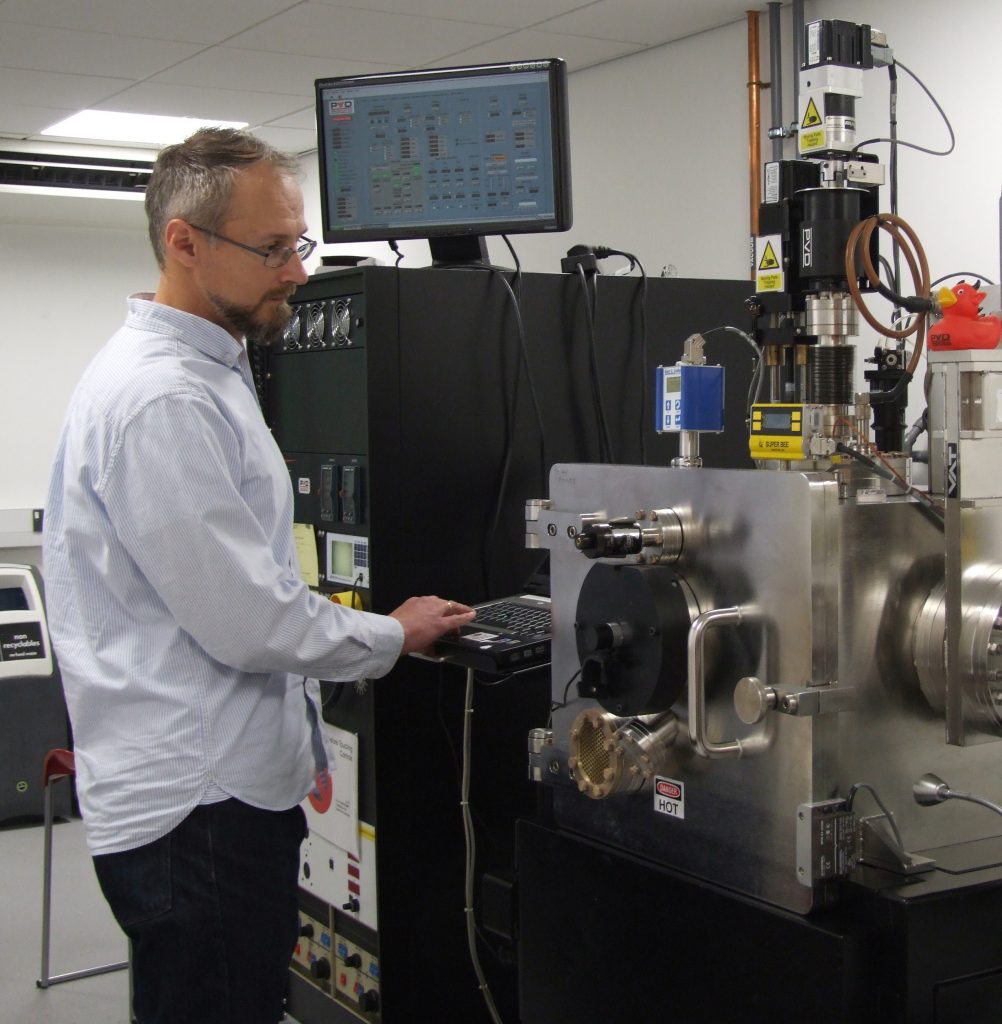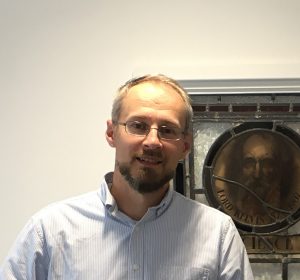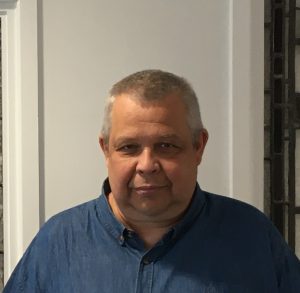The human brain is one of the most intricate systems in nature. Recreating its behaviour using computer programs is no easy task, but it can be done – by using artificial intelligence hardware that mimics the deeply complex networks of neuron cells in our brains. Dr Pavel Borisov and Professor Sergey Saveliev, at Loughborough University are exploring how new advances in technology can help to create an artificial brain.
Our brains are incredibly good at handling large amounts of complex information and applying previously learnt information in new situations. This is important for tasks like recognising familiar faces in a crowd or understanding words spoken by people with unfamiliar voices.
Computer programs that can perform these actions as well as us are extremely useful, but very challenging to build. Computers may be far better than us at remembering numbers and solving calculations, but not all information can be represented by numbers. This means regular computer programs cannot carry out many tasks as well as we can.
“If we write a computer program to detect a circle of a certain radius in the middle of a monitor, it will do it extremely fast,” says Professor Sergey Saveliev, a theoretical physicist at Loughborough University. He is working on understanding if a brain can be implemented on an electronic chipset. “But the program will become confused if the radius of the circle is different, if it isn’t in the centre of the screen, or the image is noisy.” To overcome this problem, scientists are now developing more advanced programs that can better mimic the processes occurring in our brains.
What are neural networks?
Your brain contains millions of neurons, which constantly talk to each other by exchanging signals across connections named ‘synapses’. As we learn new information, the neural networks in our brains can alter connection strengths between other neurons, allowing the system to deal with new information more effectively in the future. Scientists have recreated these systems in computers, using artificial neural networks.
“Biological neurons are connected by synapses, while artificial neurons are connected by ‘weights’,” says Dr Pavel Borisov, an experimental physicist and Sergey’s colleague at Loughborough University. “These simulated neurons can deal with input and output signals from other neurons.”
As these programs experience new data, new weights will be assigned within the neural networks, so the output signals of particular artificial neurons will be processed in slightly different ways. For example, a neural network could be trained to recognise cats by showing it thousands of pictures of cats. Once trained, the system can then work out whether new, unfamiliar images contain cats.
Yet, even as neural networks become more advanced, they are still not nearly as effective as our brains. They work by filtering useful information out of useless data, rather than reproducing human thinking ability in understanding concepts. After all, we do not need to see thousands of pictures of cats just to recognise one!
How can memristors improve neural networks?
Improving neural networks further will require more advanced physical hardware. One way forward is to develop circuits that can actively change themselves as they encounter new information, something made possible through devices called memristors. These are related to the electrical resistors you have probably learnt about in physics, but can change their resistance depending on how much current has flowed through them in the past. Essentially, this gives them a ‘memory’.
“Memristors can be used to replace weights in the software algorithms, so instead of storing all those numbers in the program, we can use each memristor’s electric resistance to represent that weight,” says Pavel. “That way, we don’t need a special memory or a processor to sum up all the weights.” In their research, Pavel and Sergey explore the exciting possibilities presented by this technology.
What has Sergey discovered so far?
As our eyes take in new visual information, they convert it into electrical signals, which pass into an area of the brain called the visual cortex. The brain encodes the information onto short electrical pulses called ‘spikes’, which are sent on to be processed by other neurons, allowing the network to alter its synapses in response to the new information.
To recreate this behaviour in artificial neural networks, Sergey and Pavel use two types of memristor. “Volatile memristors return to the same state when electric power is off, so they aren’t memorising what they learnt,” Sergey says. “However, they can transform information into a series of electrical spikes, allowing artificial neurons to communicate.”
In contrast, non-volatile memristors retain their memory when turned off and have a resistance that depends on the intensity and polarity of voltage spikes, making them more effective as artificial synapses. Sergey is combining these two types of memristor to better mimic the real visual cortex. He develops models to simulate memristor devices and artificial neurons in neural networks, then collaborates with Pavel to experimentally create these thin film devices and perform numerical analysis on spiking neurons.
How is Pavel's research improving memristor devices?
Pavel is developing new memristor devices by using fabrication techniques that are applied inside a vacuum chamber. This involves bombarding a solid disc of material with argon ions (a gas plasma), turning the thin top layer of the disc to gas. This gas settles on a solid, flat, glass-like substrate, forming a film just 100-500 atoms thick. By mixing the argon gas with oxygen, Pavel’s team has fabricated memristors featuring a thin, slightly conductive oxide film, sandwiched between two metal electrodes. “To understand if our memristor is working, we apply different voltages between the electrodes and measure the resulting current,” Pavel says.
“A proper memristor should demonstrate very distinct electric resistance values when the applied voltage is, for example, increased and then decreased, and the resistance should depend on the way the voltage was changed in the past.” Through this approach, Pavel has developed niobium oxide and silicon oxide films which can produce and control fast current spikes, in a similar way to biological neurons. The next step will be to connect these compact memristors into an advanced, low-power neural network.
Could these discoveries be applied in real life?
For Pavel, the hope is to create prototypes of compact devices which can run neural networks using multiple built-in physical memristor elements that can operate without needing online access to a web server or external power grid. “These could include medical sensors to monitor heart or breathing rhythms, or engineering sensors to monitor the safety of buildings,” he says.
For Sergey, the ultimate goal is to create an artificial visual cortex. “This device will be able to learn by itself and won’t require any additional training or programming,” he says. “This will allow it to adjust its performance depending on conditions in its environment, such as light intensity and the velocity of nearby objects.”
Such a system could be used in robots, drones and self-driving cars, helping them navigate unfamiliar environments while remaining in contact with a central control system. In the future, it could even lead to implants to restore the sight of visually impaired people, although this is still some way off.
This article was produced by Futurum Careers, a free online resource and magazine aimed at encouraging 14-19-year-olds worldwide to pursue careers in science, technology, engineering, maths and medicine (STEM), and social sciences, humanities and the arts for people and the economy (SHAPE). www.futurumcareers.com
Read this article on the Futurum Careers website.
About Artificial Intelligence
Artificial intelligence (AI) is a large family of techniques, including neural networks, which enables computers to solve problems independently of human programmers. AI takes in information about the world, which could be gathered using sensors or by monitoring a person’s online activity, then extracts useful information from this data and acts on it.
AI can be used in a diverse array of tasks, from allowing automated vehicles to navigate to suggesting relevant adverts for online shoppers. As this is still a new technology, some people are worried that it could transform our lives in negative ways we cannot yet predict. But for researchers such as Pavel and Sergey, the opportunities presented by AI are incredibly exciting, and could be used to solve some of the world’s most complex problems.
How does AI tie in with other fields of research?
As the potential applications of AI are so diverse, most fields of research can benefit from, and contribute to, advances in AI.
For Sergey, the tools used by physicists for modelling complex systems can fertilise the development of a new generation of intelligent systems, while AI can help physicists to shed light on many unsolved problems in electromagnetism, hydrodynamics, condensed matter and quantum physics. For Pavel, developing high-performance memristors involves understanding of solid-state physics, material chemistry and neuroscience.
Due to this diversity, it is no surprise that many scientists working on developing AI technology are also fascinated by completely different fields. The ability to communicate and collaborate closely with researchers from other subjects is therefore an essential skill for any scientist working to further improve AI.
Will computers ever be able to replicate the human brain?
As technology continues to advance, people are concerned that AI could one day become even more powerful than our own brains, an idea widely explored in science fiction. Sergey and Pavel both believe this is unlikely.
Since every brain is unique and constantly evolving as it responds to new information, Pavel says there simply is no way to recreate this in computer code. “It’s like replicating a thunderstorm; you can be close, but never exactly there,” he says.
However, Sergey believes the human brain is not the only, or even the best, intelligent system that exists. “We can create intelligent systems with quite different thinking abilities to us, possibly outperforming us in some respects, while still being less efficient than us in other thinking abilities,” he says. Artificially mimicking the brain’s behaviour more closely could lead to breakthroughs in ways to treat mental health issues, again highlighting the diversity and importance of AI applications.





